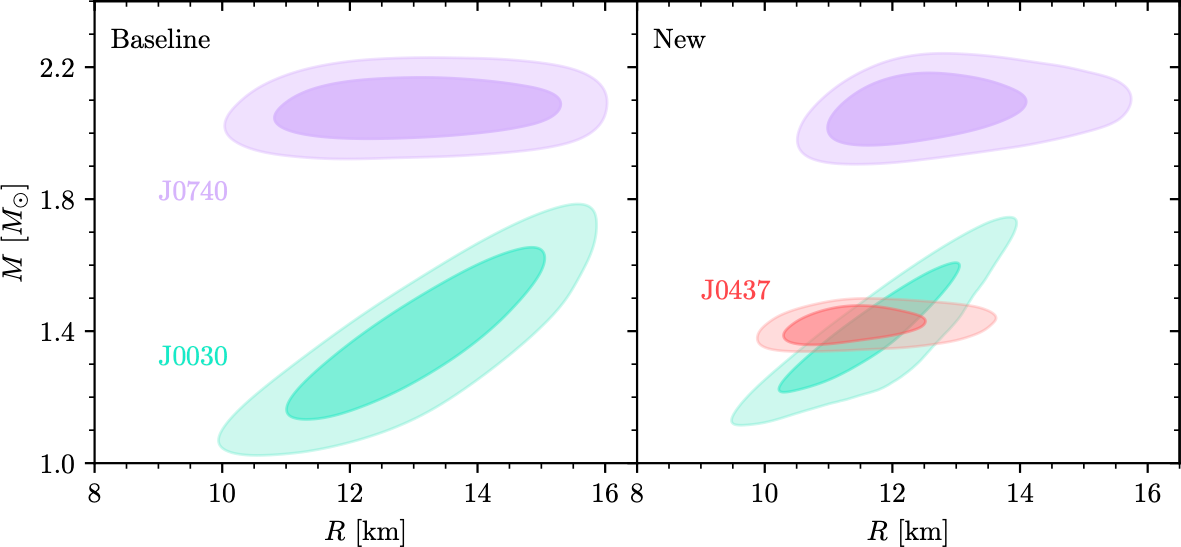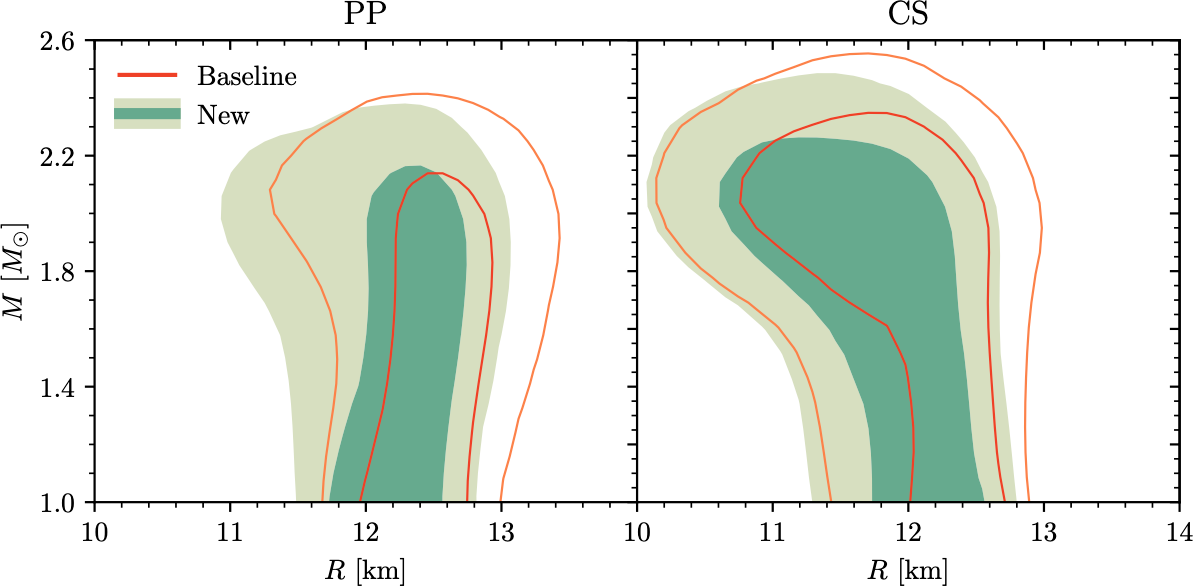NICER / ISS Science Nugget
for August 29, 2024
Toward understanding neutron star interiors
The physics that governs the interior of a neutron star is captured theoretically by an "equation of state" (EOS), the relationship between pressure and energy-density for a given substance. Our understanding of the EOS for matter at ultra-high densities does not yet extend to the unique, extremely compact conditions within neutron stars - beyond the reach of any Earth-based laboratory - whose central densities can exceed that of an atomic nucleus. Details of the EOS can, however, be derived from mass and radius measurements for multiple neutron stars, by establishing a valid mass-radius (M-R) relation, the combination of allowed, stable neutron star mass and radius values consistent with nature's one true EOS. The EOS and M-R relation connect the global properties of neutron stars to the constituent particles that make up their interiors.
To date, NICER has made precise radius measurements of three millisecond pulsars (MSPs), i.e., neutron stars that emit beams of radiation from their magnetic poles and have rotational periods less than ten milliseconds, and NICER's mass measurement for one of them joins similar results for the other two from radio-wave pulsar timing. The three MSPs measured by NICER so far are PSR J0740+6620, PSR J0030+0451, and most recently, PSR J0437-4715. In combination with input from nuclear-physics theory and laboratory experiments, these NICER M-R measurements have been used in multiple analyses to place constraints on the properties of neutron-rich matter, possible exotic phases of matter in neutron-star cores, and the presence of exotic "dark matter" inside neutron stars.
A peer-reviewed paper recently published in The Astrophysical Journal Letters by N. Rutherford (Univ. of New Hampshire) and collaborators examined the implications of NICER's new M-R measurement of J0437 on our knowledge of the neutron-star EOS. Bayesian parameter estimation - a statistical analysis that assigns probabilities to model parameters conditional on the available data - was used to infer the most likely neutron-star EOS using all available NICER M-R measurements. With new "chiral effective field theory" (an approximation of strong-force interactions) calculations at nuclear densities, two approaches to describing the neutron-star EOS in parameterized form were employed: a piece-wise "polytropic" model (PP) and one based on the speed of sound inside neutron stars (CS). Rutherford et al. found that the addition of the J0437 measurement narrows and shifts the most likely EOS to slightly smaller radii compared to prior NICER-plus-gravitational-wave EOS analysis outcomes. Smaller radii imply that the EOS is softer - i.e., an EOS where the pressure doesn't significantly increase for a given increase in density, and the star deforms more in response to tidal forces - than previously thought. Rutherford et al. also constrained the predicted maximum neutron-star mass to be between 1.92 and 2.36 times the mass of our Sun, at 95% confidence. These results show that NICER's continuing neutron-star observations are becoming ever more constraining and bringing us closer to understanding the behavior of matter in the hearts of neutron stars.


Left: Overview of NICER mass-radius measurements, with 68% and 95% credible regions shown by the inner/darker and outer/lighter contours, respectively, for the "Baseline" scenario (J0740 and J0030 from prior NICER analyses) and the "New" scenario (recently published J0437 results and updated J0740, J0030 measurements). Mass is in units of our Sun's mass. (Credit: Rutherford et al. 2024)
Right: Inferred 68% (inner) and 95% (outer) credible regions for the neutron-star M-R relation associated with EOS models based on PP and CS parameterizations, using the "Baseline" and "New" NICER data. (Credit: Rutherford et al. 2024)
<< Previous
Main Index